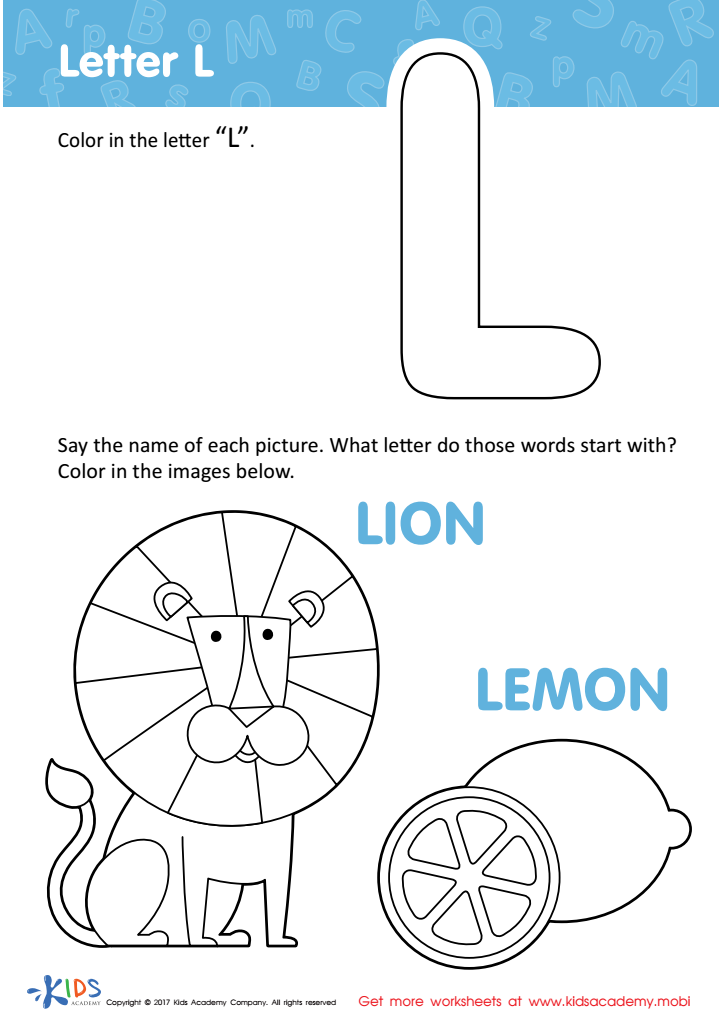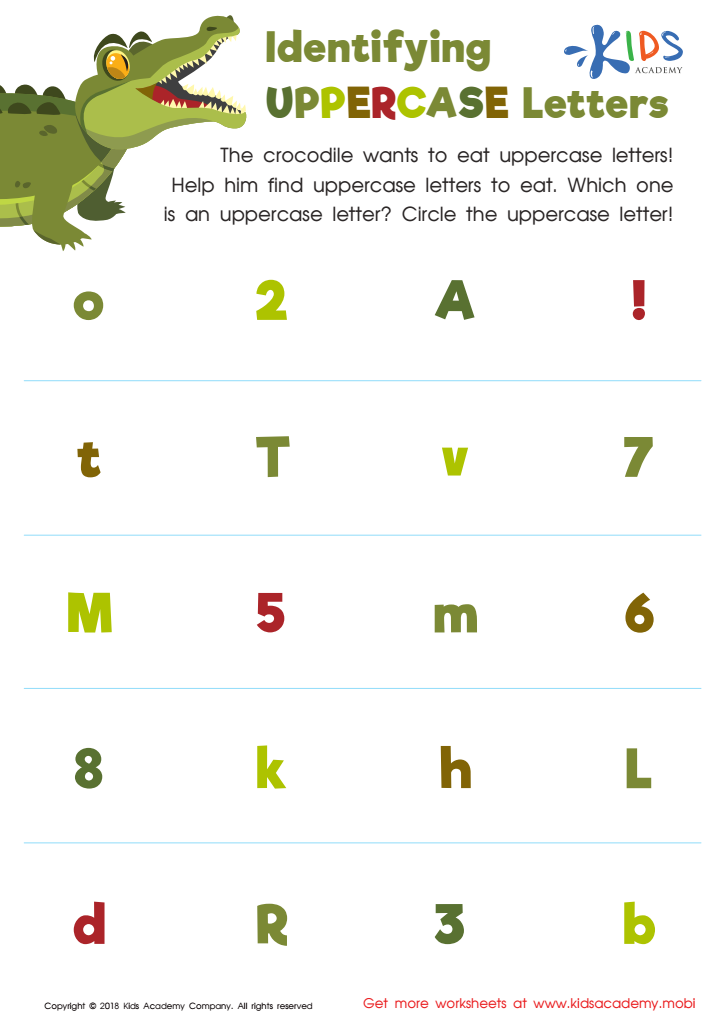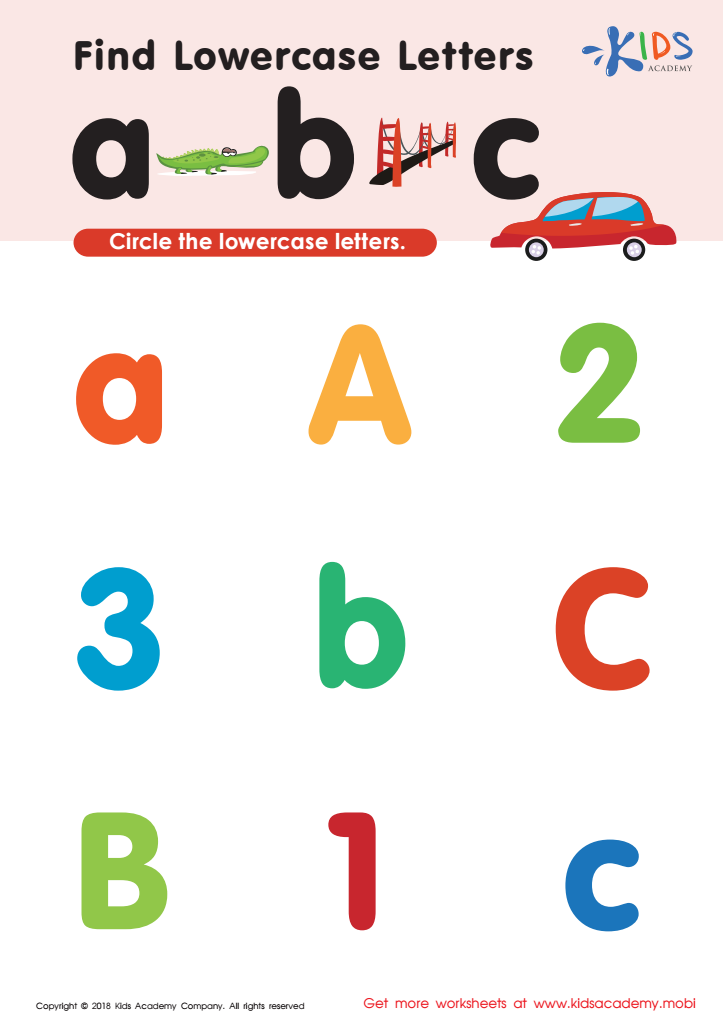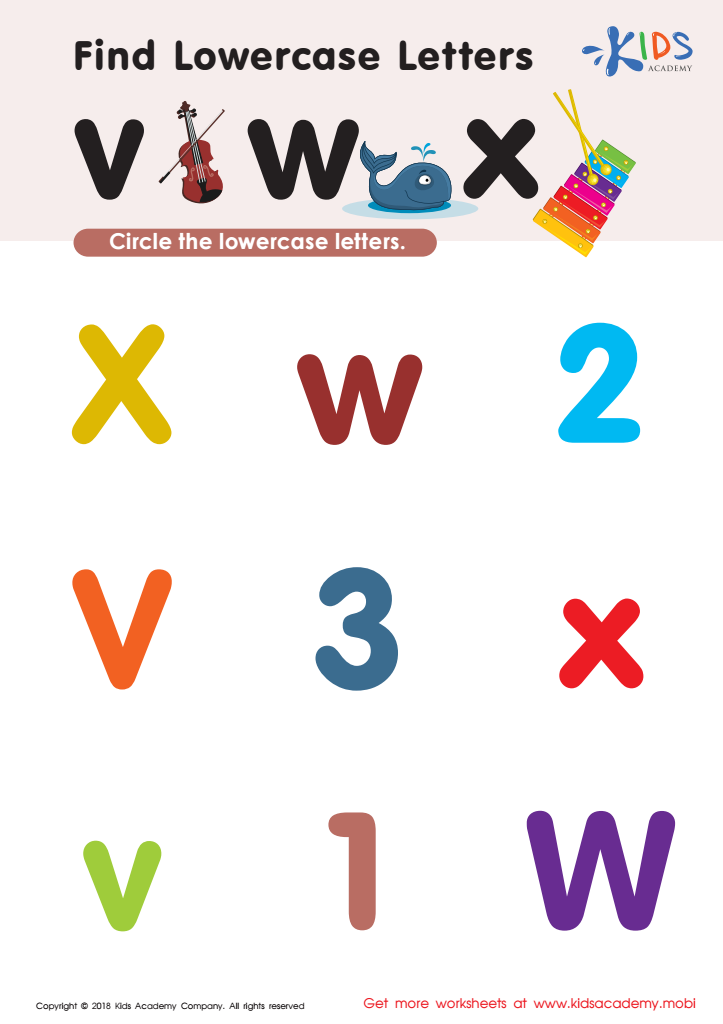Visual discrimination skills Alphabet Worksheets for Ages 4-9
5 filtered results
-
From - To
Enhance your child's visual discrimination skills with our engaging Alphabet Worksheets, specially designed for ages 4 to 9! These creative activities help young learners differentiate between letters and identify subtle differences in shapes, promoting early literacy and observational skills. Our worksheets are filled with colorful illustrations and fun exercises that will captivate and entertain your child while fostering essential skills needed for reading and writing. Perfect for home or classroom use, these resources offer a structured yet enjoyable approach to learning the alphabet. Equip your child for future academic success with our thoughtfully crafted visual discrimination activities today!


Letter L Coloring Sheet


Find Uppercase Letters A, B, and C Worksheet


Identifying Uppercase Letters Worksheet


Find lowercase letters a b c Worksheet


Find Lowercase Letters v w x Worksheet
Visual discrimination skills are crucial for children aged 4-9 as they form the foundation for effective learning, particularly in literacy. These skills enable children to distinguish between different letters, words, and sounds, which are vital when learning the alphabet. When parents and teachers nurture visual discrimination, they contribute significantly to children’s reading and writing development.
By being able to recognize similarities and differences in letter shapes, children are better equipped to identify letters and read words accurately. This skill aids in spelling and prevents common mistakes, such as confusing letter pairs like "b" and "d." Moreover, strong visual discrimination skills can enhance concentration and attention to detail, fostering overall academic success.
Furthermore, the ability to visually discriminate allows children to make connections between letters and their corresponding sounds, leading to improved phonemic awareness. This is essential in the early stages of reading, where children learn to blend sounds to form words.
In summary, investing time and resources into developing visual discrimination skills not only enhances children’s literacy abilities but also builds their confidence, encourages independent learning, and sets the groundwork for future academic achievements. Therefore, parents and teachers should prioritize empowering children with these vital skills.
 Assign to My Students
Assign to My Students
















